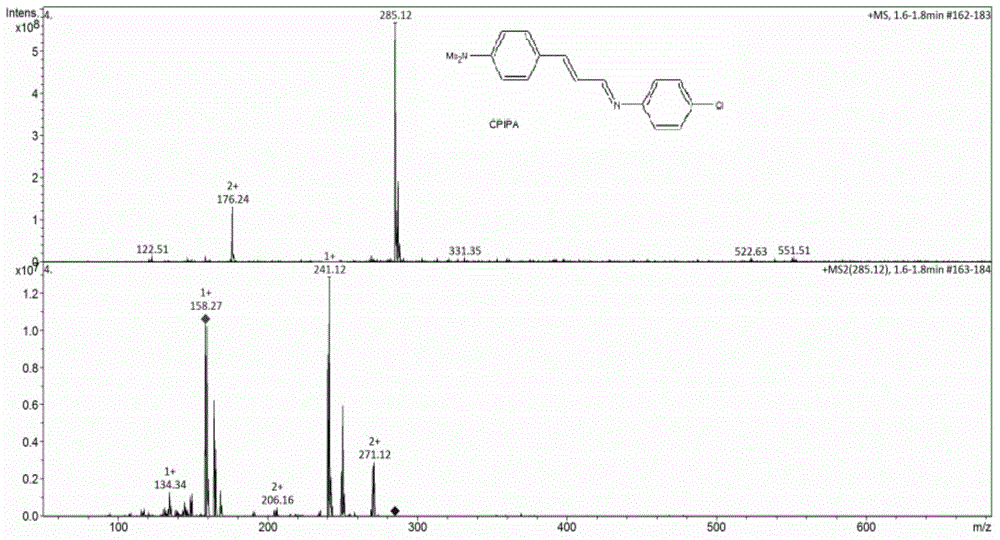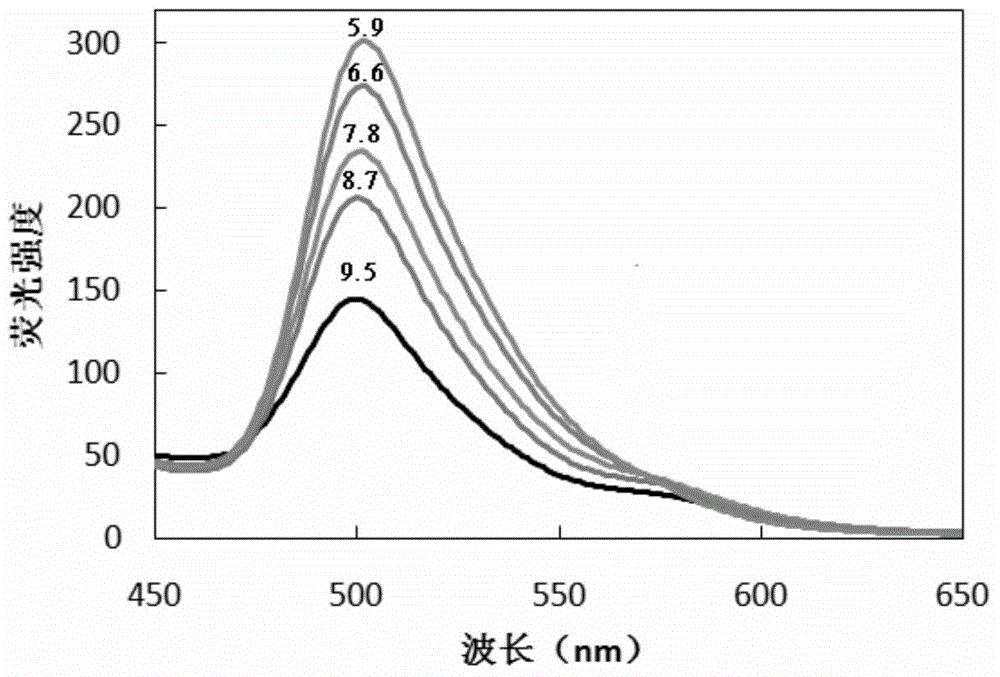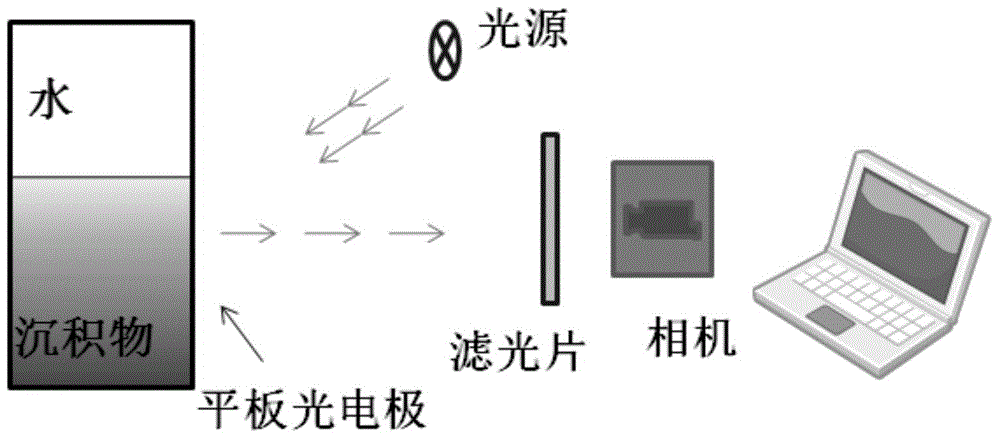ph fluorescent sensing film and method for detecting ph two-dimensional dynamic distribution of basic sediment
A technology for fluorescent sensing films and deposits, applied in fluorescence/phosphorescence, material excitation analysis, etc., can solve the problem of lack of fluorescent sensing films, and achieve the effect of broadening the scope of application, improving accuracy, and avoiding optical interference.
- Summary
- Abstract
- Description
- Claims
- Application Information
AI Technical Summary
Problems solved by technology
Method used
Image
Examples
Embodiment 1
[0038] Embodiment 1 pH fluorescent sensing film and its preparation
[0039] (1) Synthesis of fluorescent dye CPIPA
[0040] p-Chloroaniline, p-diaminocinnamaldehyde is dissolved in methanol / dichloromethane (5:2v / v) mixed solvent according to the molar mass ratio of 1:1, fully reacted at room temperature, obtains CPIPA after filtration and recrystallization, passes through thin layer Compound identification was obtained by silica gel plate running or mass spectrometry ( figure 1 ), the results show that the CPIPA purity is more than 99.99% in the obtained material.
[0041] For the spectral characteristics of the fluorescent dye CPIPA, see figure 2 .
[0042] (2) Take 120mg polyvinyl chloride pellets, add 240μl plasticizer, shake and shake well, then add 1mL tetrahydrofuran, add two kinds of fluorescent dyes CPIPA and Fluorescent Yellow 10-GN respectively (according to the concentration of the obtained mixture 1% and 2% , wt / wt), and 3.0 mg tetrakis (4-chlorophenyl) potas...
Embodiment 2
[0044] Example 2 standard curve drawing
[0045] (1) Use 0.1M sodium phosphate and sodium dihydrogen phosphate to make a mixed buffer solution, then use sodium hydroxide and dilute hydrochloric acid to adjust the pH value, so that the pH value of the solution changes between 6-11 with a range of about 0.5 units , when adjusted to a stable pH value, the 389nm UV-LED light source was used to excite, and the fluorescence ratio image acquisition system ( image 3 ) to obtain fluorescence images under different pH conditions.
[0046] (2) For the fluorescent image obtained in (1), use the image processing software ImageJ 1.46 to split the RGB three-channel, split into images of different fluorescence intensities, and obtain the R and B-channel fluorescence intensity image, calculate the fluorescence intensity ratio I(R / B) of the two channels, and perform curve fitting with the corresponding pH value to obtain the response curve of the membrane to pH, and the fluorescence release c...
Embodiment 3
[0052] Example 3 pH Fluorescent Sensing Membrane Uniformity and Response Time Test
[0053] (1) Uniformity test
[0054] Stick the sensing film in the solution with a pH value of 7, and take pictures after it is stabilized. The obtained pictures were first calculated with the ImageJ software to calculate the ratio of the R channel and the B channel, and then used the Matlab software for drawing. The RSD that obtains sensing film in the scope of 5cm * 5cm is 1.55% ( Figure 4 ).
[0055] (2) Response time test
[0056] Stick the sensing membrane in a solution with a pH value of 7, and take a picture every 10 seconds. When it reaches 130 seconds, immediately take out the sensing membrane and put it in a solution with a pH value of 9, and take pictures every 10 seconds a picture. After the picture is analyzed with ImageJ software, the ratio of the R channel and the B channel of the picture is obtained, and the ratio is taken as the ordinate, and the shooting time is taken as...
PUM
| Property | Measurement | Unit |
|---|---|---|
| Thickness | aaaaa | aaaaa |
Abstract
Description
Claims
Application Information
 Login to View More
Login to View More - R&D
- Intellectual Property
- Life Sciences
- Materials
- Tech Scout
- Unparalleled Data Quality
- Higher Quality Content
- 60% Fewer Hallucinations
Browse by: Latest US Patents, China's latest patents, Technical Efficacy Thesaurus, Application Domain, Technology Topic, Popular Technical Reports.
© 2025 PatSnap. All rights reserved.Legal|Privacy policy|Modern Slavery Act Transparency Statement|Sitemap|About US| Contact US: help@patsnap.com



